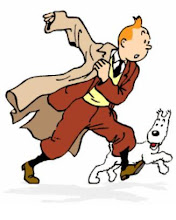
What a fantastic lecture! It’s still fresh in my mind a week later and it will be one of those the sticks for years to come. Those that know me best know that photography is a secret passion of mine and has been for years. Even now, whenever I buy a book to read, I always flick straight to the centre to look at the pictures before starting to devour the words. Daniel Meadow’s was right. Nothing helps to tell a story better than a photo.
Photography/ photojournalism are art forms. When you look through the history books, photos were something that only used to be open to the privileged few. Individuals and families would be dressed in their best for what
 could have been their only photo of the year.
could have been their only photo of the year.The Second World War lit the touch paper for photojournalism on mass. The following Korean and Vietnamese conflicts showed just how much the technology and art was developing. The images that came out of these countries sparked emotions, froze history, captured the horrors.
Nick Ut’s image from Vietnam after a napalm attack on a village is a perfect example.
Images are powerful. They can tell a story without needing words. One of the best examples I personally have come across is Margaret Thatcher in the late 1980’s, seen to be taking a lonely walk, aimlessly across an area of wasteland where a factory, employing thousands once stood on the bank of the River Tees. The reason Thatcher was there was to promote much needed regeneration in that area of the north east. The image went down in history as Thatcher’s “Walk into the wilderness” It was ironic that the image was captured during a time described as Mrs Thatcher’s “wilderness years” where the Prime Minister was seen to have cut herself off from her party and voters and slowly walking towards the exit door of British politics.
You add words on top of a series of images and what emerges is a new form of digital story telling. People’s voices, opinions and stories no longer have to hide behind the audio. Images help the mind open, letting people that felt on the periphery into the story.
Photographic technology continues to flourish. It’s a safe bet to say that everyone now owns a camera in some form, whether it be on a phone, a small digital device or a large professional body and lens. Whatever the model and make , we are all photographers now, everyone has been given a key to photograph.
So let’s get going. What’s the excuse? Images tell the story, emotions are portrayed through them, photos offer diversity in what they deliver. Let images help tell the deliverance.
Photography fascinates me, and will always do so. So much has changed with the technology and art since I first picked up a camera and took my first snapshot. In my opinion some have been for the better, others for the worse. But I am convinced the medium will never die, just continue to develop, it’s up to us to make the most of it.
Images taken from: http://www.wbur.org/photogallery/op_sontag/default.asp?counter=1 , http://rememberwhen.gazettelive.co.uk/2008/04/head_wrightson.html

No comments:
Post a Comment